How Power, Cooling, and Land Became Boardroom Problems for Asia’s Data Center Leaders
Power, land, and sustainability constraints are forcing bold decisions. See what the top players are doing.
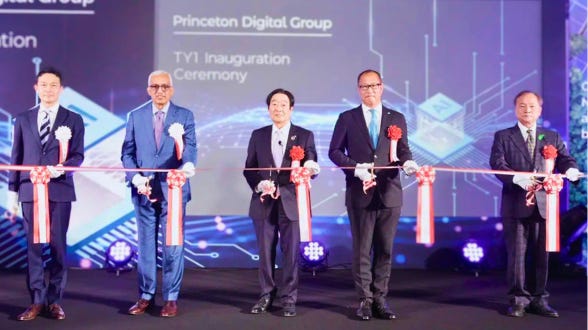
The Real Bottleneck: Why the Asia-Pacific’s AI-Ready Data Center Boom Faces a Gridlock
The Illusion of Infinite Demand: A Supply-Side Reckoning
Welcome to AI Week Asia’s Substack – your intelligence briefing at the intersection of technology, capital, and infrastructure.
The data center surge in the Asia-Pacific is one of the most compelling investment stories of the post-pandemic world. But beneath the headlines of hyperscale growth lies a structural constraint that threatens to stall momentum: energy. Grid availability – not just land or capital – has emerged as the central bottleneck in the region’s digital infrastructure expansion.
This was evident in the case of Princeton Digital Group’s TY1 Campus near Tokyo. Originally slated to open in the second half of 2024, the facility was delayed several months, officially launching only in April 2025.
While construction was completed on schedule, grid connection and power access issues contributed to the drawn-out commissioning timeline. PDG ultimately selected Saitama, 35 km from Tokyo, citing “significant constraints” in Tokyo’s central and eastern districts related to energy capacity.
Cushman & Wakefield reports nearly 12 gigawatts of operational capacity in the Asia-Pacific as of mid-2024, with 1.3 GW added in just six months. Structure Research expects another 13 GW by 2030. But as generative AI transitions from hype to mission-critical infrastructure, the limits of electricity access and grid reliability are becoming acute.
Grid connection timelines of up to eight years in Japan and South Korea are now common. Singapore, once a regional leader, continues to operate under an effective moratorium.
Hyperscale data centers demand two to five times more energy than traditional cloud. Most grids were never built to accommodate that.
Learn what’s driving the mismatch between digital ambition and physical infrastructure.

Energy, Not Land or Capital, Is the Hard Ceiling
In the past, land availability and capital were the decisive factors for data center growth. But in the AI era, even fast-growing markets like Malaysia and India are constrained by power and water availability.
In Johor Bahru, capacity surged 80% year-on-year, yet operators now caution that power limitations may curb future expansion. Similarly, India’s emerging AI parks face delays due to electricity and water planning.
Even where land is cheap and funding is ample, electricity has become the new bottleneck. Cooling needs for liquid-cooled AI racks are straining grid capacity.
Policy reform is lagging. Without regulatory alignment, grid upgrades can’t keep pace with infrastructure demand.
One example of proactive planning is Vena Group’s launch of Vena Nexus in May 2025 – a new data center subsidiary with 3 GW in pipeline capacity. Of that, 1 GW is fully AI-ready, with power, land, and permits secured. Vena Nexus reflects a shift: infrastructure must integrate with energy strategy from day one.
The momentum began in 2023, when Vena Energy signed a strategic framework with Suntech, Powin, and REPT Battero to develop Indonesia’s renewables supply chain. That foundation enables today’s vertically integrated model.
Understand the infrastructural limits behind the growth narrative.
From Vertical Deployment to Horizontal Strain
The AI data boom is pushing regional systems to their limits. Developers are shifting to greenfield sites where latency isn't a constraint, but governance is. Permitting, land rights, water, and power are harder to coordinate across jurisdictions.
PDG’s MU1 facility in Navi Mumbai is emblematic of this new model. The site is part of a $1.2 billion regional build-out. In May 2025, PDG secured $800 million to expand in Mumbai, Langfang, and Tokyo, plus $400 million in HoldCo financing.
This scale of cross-border capital underscores the complexity of aligning multi-jurisdictional infrastructure strategies.
Latency tolerance in AI workloads allows edge sprawl, but the weakest jurisdictional link can delay an entire regional plan.
Hyperscale now means horizontally integrated infrastructure – and government coordination.
See why AI infrastructure demands macro alignment.

Deal Complexity and the Mirage of Infinite Capital
Money continues to flow into Asia-Pacific data centers. MSCI tracked $4.8 billion in completed acquisitions by Q3 2024 – double the total from 2023. But growth isn’t simple.
Infrastructural risk is the new front line. With $10–12 million required per megawatt and gigawatt-scale AI needs, timelines are longer and exposure is higher.
The old model – build, lease, collect – is over. Today, it’s multi-year execution and cross-sector resilience.
Case in point: DayOne Data Centers’ RM15 billion (S$4.6 billion) Islamic green financing deal. Touted as Southeast Asia’s largest, it required underwriting alignment across banks, energy providers, and regulators.
Underwriting models are shifting. Infrastructure execution risk now outweighs financial risk.
AI is changing how capital is deployed – and what it demands.

The Grid Is the New Frontier
Data centers are no longer passive grid tenants – they are reshaping it. AI workloads need massive, reliable power provisioning. Sovereigns that offer this are becoming digital superpowers.
Vena Nexus, an infrastructure arm of Vena Energy (formerly Equis Energy), is driving this shift. Following GIP’s 2017 acquisition, Vena’s model integrates campus and energy development.
With co-located wind and solar assets, Vena is redefining the grid as core infrastructure for data centers, not a background utility.
AI competitiveness may soon be measured in kilowatts per capita.
The grid is your new supply chain.

Global Stakeholders Need to Get Strategic
From Tokyo to Jakarta, infrastructure – not ambition – is the constraint. Building next-gen AI systems requires public–private alignment at every level.
In the Philippines, Megawide and Evolution Data Centres signed a shareholders’ agreement in February 2023 to build a 69 MW colocation campus. By December 2024, Evolution had signed an MoU with Citicore Renewable Energy to underpin the site with 100 MW of 24/7 green power.
These actions illustrate what emerging markets need: cohesive execution strategies that link permitting, energy, and capital.
The question isn’t whether AI can scale. It’s whether your market can.

Conference Update: AI-Ready Data Centers Asia 2025
These insights aren’t just data points – they’re a call to action.
Strategic alliances, scalable consolidation, and measurable ROI are reshaping APAC’s digital infrastructure landscape. The cost of hesitation? Losing your competitive edge.
This is why attending the premier event connecting data center CEOs, technical leaders, and industry investors across APAC is critical.
Date & Time:
December 3, 2025
9:00 AM - 5:30 PM
Location
Manila, Philippines
Key Speakers:
CEOs and Cloud, AI, and APAC VPs
Hyperscalers, Colocation Providers, AI Cloud Providers, and Inference Providers
Session Highlights:
Keynote addresses on digital transformation
Technical deep-dives into AI-ready infrastructure
Interactive roundtables for strategic networking
Sample Program Segment:
9:30 AM
AI Infrastructure Demands
Meeting the Challenge: Build AI-Ready Infrastructure Today or Play Catch-Up Tomorrow?
Data centers need to invest in advanced infrastructure to meet the unique requirements of modern AI workloads, including high-density power configurations and GPU-accelerated computing. Balancing this investment with existing resources poses a significant challenge.
Should we invest heavily in advanced infrastructure for AI workloads now, or should we wait and see how demand evolves before making significant changes?
Market Focus: India
India's rapidly growing tech sector and increasing investments in AI infrastructure make it a key market for exciting new GPU technologies.
Why Attend:
Meet regulators from Southeast Asia’s fastest-growing markets
Connect with JV and platform partners
Shape the future of your regional strategy
Would you like to be featured on the program?

Why Manila?
The Philippines is emerging as a digital powerhouse, backed by strong fundamentals and real execution.
US$633 million data center market in 2024, growing to US$1.97 billion by 2030 (20.9% CAGR)
Expected capacity of 1.3 GW by 2030; colocation revenue projected to triple from US$0.39 billion in 2025 to US$1.16 billion
This isn’t speculation – it’s strategy.
In September 2024, Ayala Land and Flow Digital Infrastructure topped off ML1 in Laguna. With dual power feeds and capacity for 36 MW of IT load, ML1 exemplifies energy-forward design in a growing market.
Position your strategy in Southeast Asia’s most dynamic new market.
Join the Movement
Waiting is costly. Capital is mobile. The Asia-Pacific infrastructure wave will reward those who act early, build alliances, and bet on the right jurisdictions.
Take the lead – be where AI infrastructure is being built.
Get Bonus Content
Explore bonus content, data visualizations, and our full archive at arcmediaglobal.com/datacenters. For inquiries, contact Ms. Mia Messina at mia@arcmediaglobal.com or call +63 (2) 8785 1977.
See how you can connect with regional stakeholders.
Stay Connected
Get regular updates:
Weekly Newsletters on LinkedIn
Deep-Dive Articles on LinkedIn
AI Week Asia 2025
☎️ +63 (2) 8785-1977
☎️ +1 (310) 362-3282
📨 datacenters@arcmediaglobal.com
🌏 arcmediaglobal.com/datacenters
Organized by
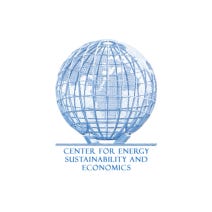
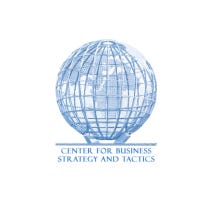
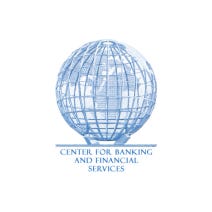
Promoted by



Official Media Partners




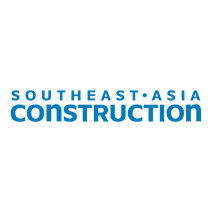
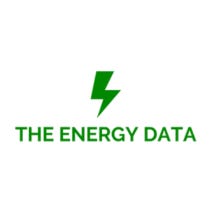
Official Trade Association Partner



















